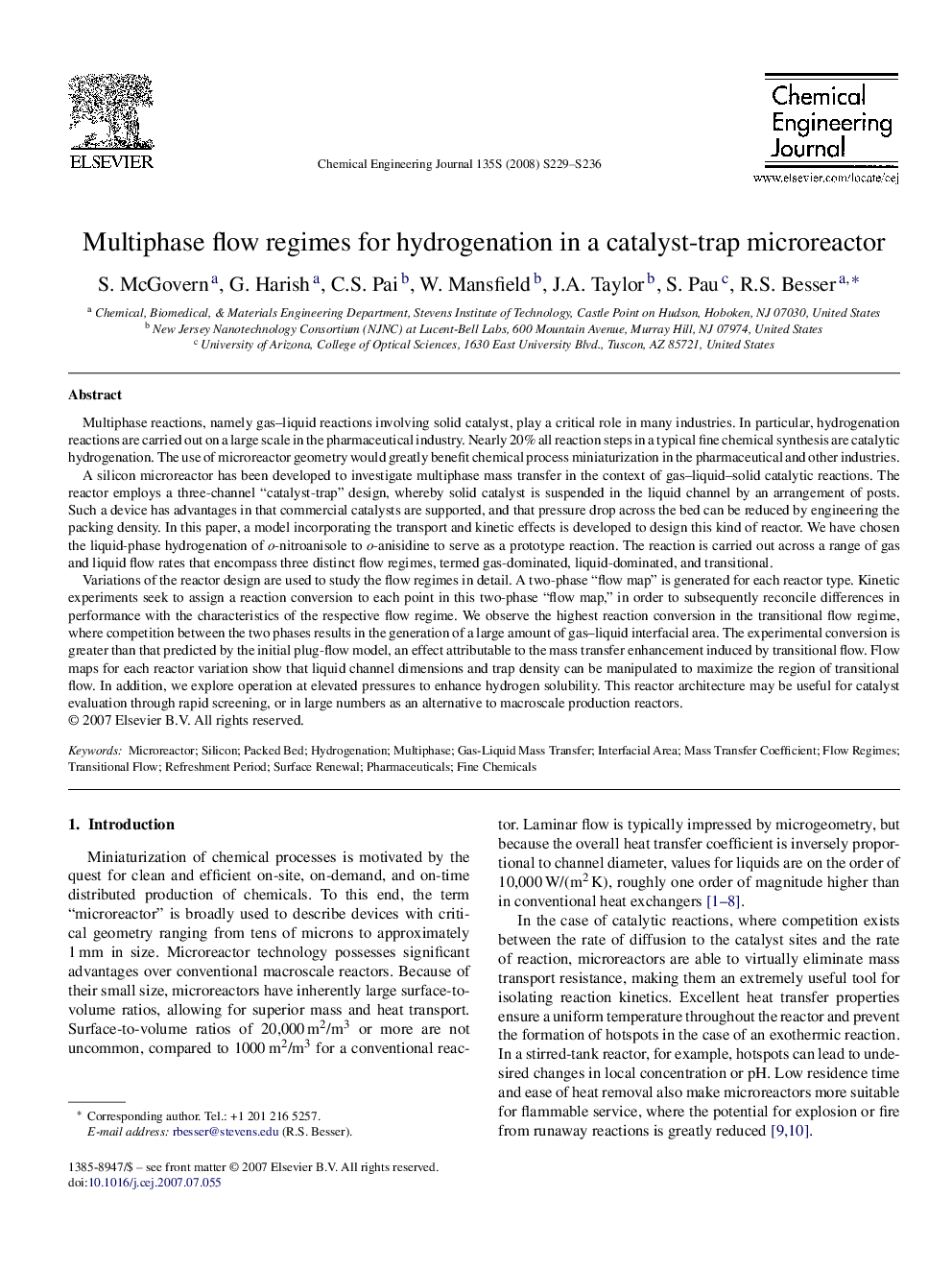| کد مقاله | کد نشریه | سال انتشار | مقاله انگلیسی | نسخه تمام متن |
|---|---|---|---|---|
| 153735 | 456537 | 2008 | 8 صفحه PDF | دانلود رایگان |

Multiphase reactions, namely gas–liquid reactions involving solid catalyst, play a critical role in many industries. In particular, hydrogenation reactions are carried out on a large scale in the pharmaceutical industry. Nearly 20% all reaction steps in a typical fine chemical synthesis are catalytic hydrogenation. The use of microreactor geometry would greatly benefit chemical process miniaturization in the pharmaceutical and other industries.A silicon microreactor has been developed to investigate multiphase mass transfer in the context of gas–liquid–solid catalytic reactions. The reactor employs a three-channel “catalyst-trap” design, whereby solid catalyst is suspended in the liquid channel by an arrangement of posts. Such a device has advantages in that commercial catalysts are supported, and that pressure drop across the bed can be reduced by engineering the packing density. In this paper, a model incorporating the transport and kinetic effects is developed to design this kind of reactor. We have chosen the liquid-phase hydrogenation of o-nitroanisole to o-anisidine to serve as a prototype reaction. The reaction is carried out across a range of gas and liquid flow rates that encompass three distinct flow regimes, termed gas-dominated, liquid-dominated, and transitional.Variations of the reactor design are used to study the flow regimes in detail. A two-phase “flow map” is generated for each reactor type. Kinetic experiments seek to assign a reaction conversion to each point in this two-phase “flow map,” in order to subsequently reconcile differences in performance with the characteristics of the respective flow regime. We observe the highest reaction conversion in the transitional flow regime, where competition between the two phases results in the generation of a large amount of gas–liquid interfacial area. The experimental conversion is greater than that predicted by the initial plug-flow model, an effect attributable to the mass transfer enhancement induced by transitional flow. Flow maps for each reactor variation show that liquid channel dimensions and trap density can be manipulated to maximize the region of transitional flow. In addition, we explore operation at elevated pressures to enhance hydrogen solubility. This reactor architecture may be useful for catalyst evaluation through rapid screening, or in large numbers as an alternative to macroscale production reactors.
Journal: Chemical Engineering Journal - Volume 135, Supplement 1, 15 January 2008, Pages S229–S236